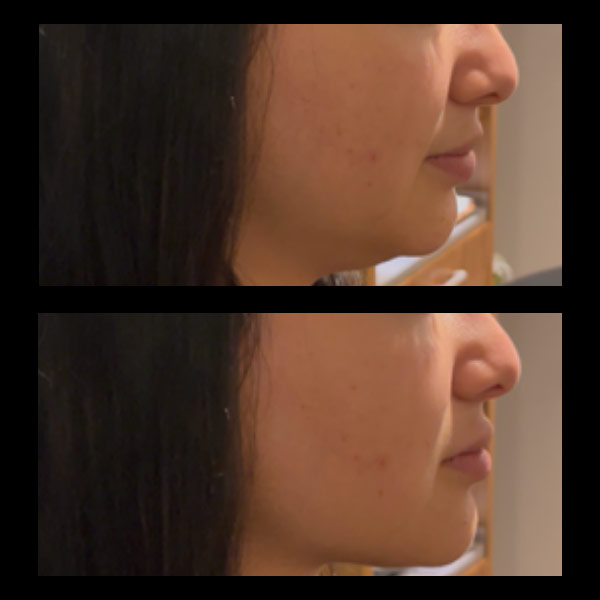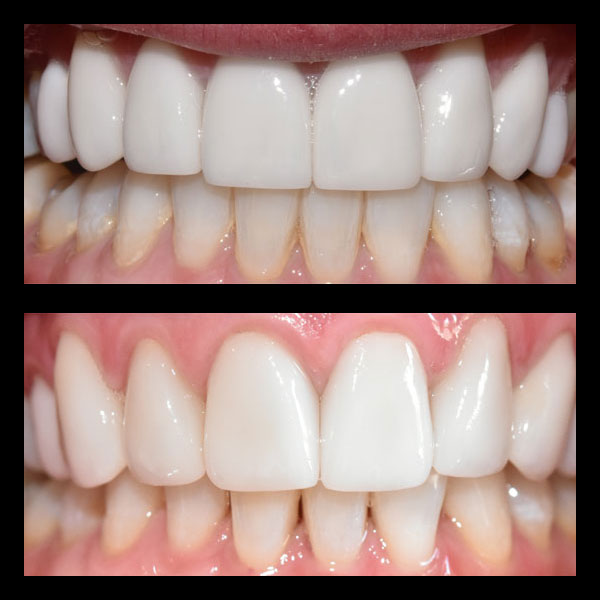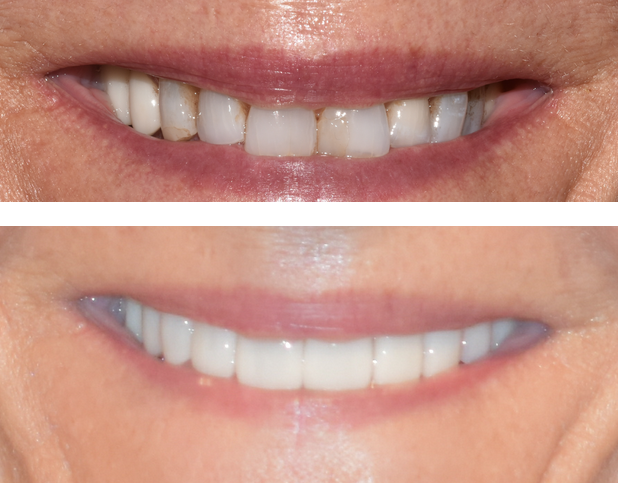Hey everyone, let’s talk teeth. Or rather, let’s talk about how we *see* teeth, jaws, and everything else that makes up your unique smile. I’ve been writing about health, wellness, and the tech that supports it for over a decade now, and I’ve seen some truly remarkable shifts. Remember those old bitewing X-rays? You know, the ones where you awkwardly clamped down on that sharp piece of plastic, held your breath, and hoped for the best? They served their purpose, sure. But dentistry, like so many fields, has taken giant leaps forward, especially when it comes to diagnostics.
It’s April 2025, and the pace of innovation isn’t slowing down. One of the most significant advancements that’s become increasingly crucial in top-tier dental practices is 3D cone beam imaging. It sounds fancy, I know, but stick with me. This isn’t just about flashy gadgets; it’s about fundamentally changing how dentists understand your oral health, leading to more precise diagnoses, smarter treatment plans, and ultimately, better, longer-lasting results. For practices like Incredible Smiles here in Boulder, which pride themselves on merging cutting-edge tech with a holistic, patient-first approach, tools like this are invaluable.
Understanding 3D Cone Beam Imaging
So, what exactly *is* 3D cone beam imaging? Think of it like upgrading from a flat map to a detailed, interactive globe. Officially known as Cone Beam Computed Tomography (CBCT), it uses a special type of x-ray equipment. Unlike traditional dental or medical CT scans, a cone-shaped X-ray beam moves around your head in a single rotation. In less than a minute, it captures hundreds, sometimes thousands, of distinct images or “views.”
This raw data is then digitally reconstructed by sophisticated software to create a virtual, three-dimensional model of your teeth, soft tissues, nerve pathways, and bone – all in incredible detail. Gone are the days of trying to interpret overlapping structures on a flat, 2D image. With CBCT, your dentist can navigate through layers, view structures from any angle, and take precise measurements. It’s like having architectural blueprints for your mouth and jaw.
The difference from traditional radiography is night and day. Standard 2D X-rays (like panoramic or bitewing images) are essentially shadowgraphs. They flatten complex 3D structures onto a 2D plane, which inevitably leads to distortion and superimposed anatomy. It’s like trying to understand a complex sculpture from just one photograph. CBCT eliminates this guesswork. Need to see the exact path of a nerve before placing an implant? Check. Need to assess the bone density and volume in a potential implant site? Check. Need to visualize the intricate structure of the temporomandibular joint (TMJ)? Absolutely. This diagnostic precision is unparalleled.
This high level of detail wouldn’t be quite as useful without the digital backbone supporting it. Digital scanning, both from the CBCT itself and often complemented by intraoral scanners (those wands that create digital models of your teeth without the goopy impression material – thank goodness!), provides crystal-clear data. This digital information forms the foundation for accurate diagnoses and, crucially, for creating truly personalized treatment plans. It allows dentists to tailor procedures specifically to your unique anatomy and needs. This isn’t just about fixing a problem; it’s about understanding the *entire* system – how your teeth, muscles, and joints work together. This aligns perfectly with a holistic care approach, focusing on overall patient wellness, not just isolated dental issues. At Incredible Smiles, this philosophy drives their use of technology – it’s always in service of achieving a functional, healthy, and beautiful result for the whole person.
Technological Advancements in Dental Diagnostics
The journey to this level of diagnostic clarity has been fascinating. Early dentistry relied heavily on visual examination and those basic 2D X-rays I mentioned. While revolutionary at the time, they offered limited information. The introduction of panoramic X-rays gave a broader overview, but still suffered from the limitations of 2D imaging. The real leap came with computed tomography (CT) in medicine, but traditional CT scans involved significantly higher radiation doses and weren’t always practical or necessary for many dental applications.
Enter CBCT. Developed specifically for the head and neck region, it provided that crucial third dimension with a significantly lower radiation dose compared to medical CT, making it much more suitable for routine dental use. Its adoption has steadily grown, particularly in specialized areas like implantology, orthodontics, endodontics (root canals), and TMJ therapy.
But CBCT rarely works in isolation these days. Think of it as the cornerstone of a sophisticated diagnostic suite. Complementary innovations enhance its power. For instance:
- Intraoral Digital Scanners: These devices capture highly accurate 3D surface models of your teeth and gums, replacing traditional putty impressions. When combined with CBCT data, dentists get a complete picture of both your internal bone structure and external tooth shapes and positions.
- Dental Lasers: While primarily a treatment tool, lasers also play a role in diagnostics, sometimes used for detecting early decay or evaluating gum health with minimal invasion. Their precision complements the detailed planning enabled by CBCT.
- Advanced Software: Sophisticated software allows dentists to merge CBCT scans with digital impressions, plan implant placements virtually, simulate orthodontic movements, and even design surgical guides for unparalleled precision during procedures. AI is also beginning to play a role in analyzing these complex datasets, helping to identify potential issues even faster.
How does all this tech improve diagnostic accuracy? By providing *more* information and *clearer* information. Seeing the exact location of an impacted wisdom tooth relative to the nerve, visualizing the complex anatomy of a root canal system before starting treatment, precisely measuring bone availability for implants, or identifying subtle joint degeneration in TMJ disorders – these were previously difficult or impossible with 2D imaging alone. This allows for earlier detection of problems and more predictable treatment outcomes.
At Incredible Smiles here in Boulder, these aren’t just futuristic concepts; they are tools used daily. Leveraging state-of-the-art CBCT scanners alongside digital scanning technology allows their team, including experienced dentists like Dr. Uppal and Dr. Kemmet, to perform incredibly thorough evaluations. It means they aren’t guessing; they are planning with data. This commitment to using modern imaging equipment ensures a comprehensive understanding of each patient’s unique situation, paving the way for exceptional care.
Enhancing Treatment Planning with 3D Imaging
Okay, so we have these incredibly detailed 3D images. How does that actually translate into better treatment? The impact is profound. Precise imaging data is the bedrock of effective, predictable treatment strategies across virtually all disciplines of dentistry.
Let’s walk through how this data informs specific procedures, many of which are offered at Incredible Smiles:
- Dental Implants: This is perhaps the most common and critical application of CBCT. The 3D scan allows the dentist to:
- Precisely measure the height and width of available bone.
- Identify the exact location of vital structures like nerves (especially the inferior alveolar nerve in the lower jaw) and sinuses to avoid complications.
- Assess bone quality to ensure predictable implant integration.
- Virtually plan the ideal implant position, angle, and size before surgery.
- Design and fabricate surgical guides that ensure the implant is placed exactly according to the plan. This translates to safer, faster, and more successful implant procedures.
- Invisalign & Orthodontics: While not always required for simple cases, CBCT can be invaluable for complex orthodontic treatment. It helps visualize the exact position of tooth roots, identify impacted teeth, assess jaw relationships, and understand the limits of tooth movement, leading to more predictable alignment and better functional outcomes with clear aligners or braces.
- Veneers & Smile Makeovers: While the surface aesthetics of veneers are planned using photos and digital surface scans, understanding the underlying tooth structure and bone support via CBCT can be important, especially in more comprehensive smile makeovers involving changes to bite or position, ensuring a stable foundation for cosmetic enhancements.
- Restorative Dentistry (Crowns, Bridges, Fillings): For complex restorations, CBCT can help assess the extent of decay or damage, evaluate the relationship of a tooth to nearby nerves or sinuses, and plan for procedures like crown lengthening with greater precision.
- TMJ Treatment & Bite Optimization: CBCT provides clear visualization of the temporomandibular joint structures, allowing dentists to identify degeneration, displacement, or other abnormalities contributing to pain and dysfunction. This is critical for diagnosing issues and planning treatments aimed at achieving proper occlusion and muscle balance, central tenants of the neuromuscular approach used at Incredible Smiles.
- Sleep Apnea Solutions: CBCT scans can be used to evaluate the airway space, helping to identify potential obstructions and informing the design of custom oral appliances intended to improve breathing during sleep.
- Full Mouth Reconstruction: For complex cases requiring rebuilding the entire bite, CBCT is essential for assessing the condition of every tooth, the supporting bone, the jaw joints, and planning the intricate sequence of treatments needed to restore function, comfort, and aesthetics.
Ultimately, enhanced imaging facilitates a truly customized, patient-centered approach. The detailed diagnostic information allows dentists to discuss options with patients more effectively, explaining the “why” behind recommended treatments using clear visual aids. It empowers clinicians to anticipate challenges, minimize risks, and optimize clinical outcomes whether the goal is cosmetic enhancement, restoring function, or alleviating pain. Integrating these cutting-edge diagnostic tools is no longer a luxury; it’s becoming the standard for high-quality, predictable dentistry.
Integrating Advanced Imaging at Incredible Smiles
Knowing the power of this technology is one thing; seeing it seamlessly integrated into a patient-focused practice is another. At Incredible Smiles in Boulder, 3D cone beam imaging isn’t just an occasional tool; it’s a fundamental part of their diagnostic and treatment planning workflow, reflecting their commitment to providing the highest standard of care.
Their approach is beautifully holistic. They don’t just adopt technology for technology’s sake. Instead, they thoughtfully combine advanced tools like CBCT, digital scanning, and lasers with their deep understanding of dental artistry and physiologic (neuromuscular) principles. This means the detailed information from a 3D scan isn’t just looked at in isolation; it’s considered within the context of the patient’s overall bite function, muscle comfort, airway health, and aesthetic goals. Need TMJ treatment? The CBCT helps visualize the joint, informing neuromuscular approaches to restore balance. Considering dental implants? The scan ensures precise placement for optimal function and longevity. Planning a full mouth reconstruction? Every detail from the scan contributes to a comprehensive plan for lasting health and beauty.
Visiting their practice doesn’t feel like stepping into a cold, clinical lab despite the state-of-the-art equipment. Incredible Smiles has intentionally cultivated a warm, spa-like environment. This focus on patient comfort and total wellness means you benefit from the precision of modern dental technology without sacrificing a relaxing and personalized experience. They understand that trust and comfort are just as important as technical skill.
The integration of CBCT enhances virtually every service they offer, from the foundational teeth cleanings and periodontal therapy (where underlying bone structure is key) to complex restorative and cosmetic procedures:
- Cosmetic Dentistry (Veneers, Bonding, Smile Makeovers): Ensuring structural integrity supports beautiful results.
- Orthodontics (Invisalign): Planning complex movements with confidence.
- Restorative Dentistry (Fillings, Crowns, Bridges): Evaluating tooth health beneath the surface.
- Implant Dentistry: Enabling precise, safe, and predictable placement.
- Specialized Care (TMJ, Sleep Apnea, Bite Optimization, Full Mouth Reconstruction): Providing essential diagnostic insights for comprehensive solutions.
This blend of advanced diagnostics, technical expertise honed over 30 years, artistic vision, and a focus on the patient’s overall well-being is what truly sets Incredible Smiles apart. Their commitment to excellence is evident in their investment in technologies like 3D cone beam imaging and, more importantly, in how they use these tools to deliver personalized, predictable, and beautiful outcomes for the Boulder community.
The Future is Clear: Seeing is Believing
Navigating the world of dental care can sometimes feel overwhelming, but advancements like 3D cone beam imaging are making a real difference. The ability to see your unique oral structures in such detail empowers both you and your dentist to make more informed decisions, leading to treatments that are not only more effective but often safer and more comfortable too.
It represents a significant shift towards truly personalized and predictive dental medicine. For practices like Incredible Smiles, embracing this technology is a natural extension of their dedication to providing exceptional, holistic care right here in Boulder.
So, next time you visit your dentist, don’t hesitate to ask about the imaging technology they use. Understanding how they diagnose and plan treatments can give you valuable peace of mind. If you’re in the Boulder area and looking for a practice that combines the latest diagnostic tools with decades of experience and a genuinely patient-centered approach, consider reaching out to Incredible Smiles. Experiencing the difference that precise, 3D imaging makes could be the first step toward achieving your healthiest, most confident smile yet.
What are your thoughts on advanced dental technology? Have you experienced 3D imaging yourself? Share your perspective in the comments below – I’d love to hear from you!
Frequently Asked Questions
What is 3D cone beam imaging in dentistry?
3D cone beam imaging, also known as Cone Beam Computed Tomography (CBCT), is an advanced type of X-ray that captures detailed, 3D images of the teeth, soft tissues, nerve pathways, and bone. It allows for more precise diagnoses and treatment planning by providing a complete, interactive model of the dental structures.
How does 3D cone beam imaging improve dental diagnostics?
3D cone beam imaging enhances diagnostics by offering clear, detailed images that eliminate the distortions found in traditional 2D X-rays. Dentists can now view dental structures from any angle and understand complex anatomies like nerve pathways and bone density accurately, leading to better treatment outcomes.
What are some applications of 3D cone beam imaging in dental treatments?
3D cone beam imaging is used extensively for dental implants, orthodontics, TMJ treatment, veneers, and restorative dentistry. It helps dentists plan implant placements, assess bone conditions, visualize joint structures, and understand the intricate details needed for precise and effective treatments.
Why is 3D imaging important for dental implant procedures?
3D imaging is crucial for dental implants as it allows dentists to accurately measure bone density, identify vital structures like nerves and sinuses, and plan the implant’s position and angle with precision. This reduces risks and ensures the procedure’s success and longevity.
How does advanced dental imaging support a holistic approach to dental care?
Advanced dental imaging supports a holistic care approach by providing comprehensive insights into a patient’s overall oral health. It helps tailor treatments to individual anatomy and needs, focusing not only on resolving specific issues but also on improving overall dental function and aesthetics.








